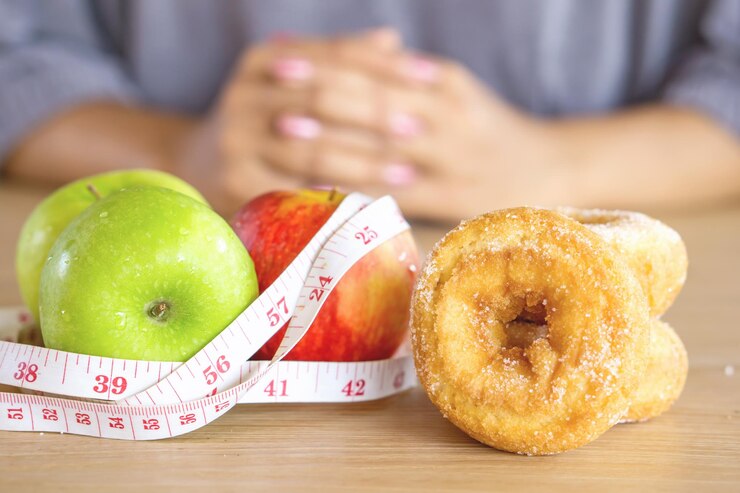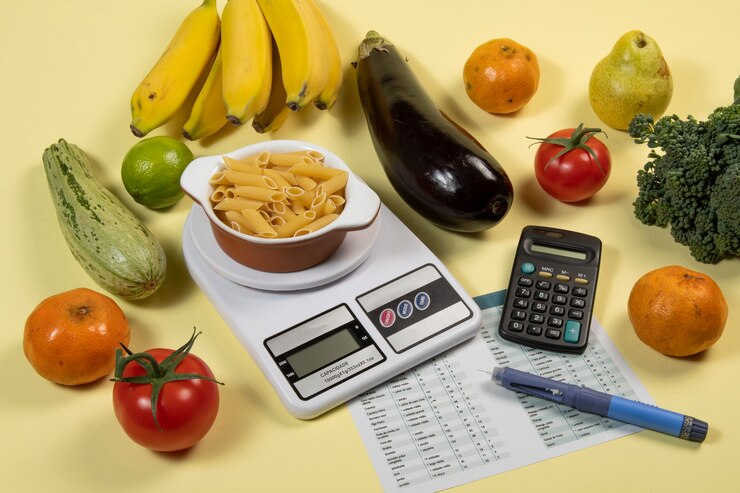
Calorie Deficit
Table of Contents
With so many weight loss methods out there, it’s easy to feel overwhelmed. But one proven strategy stands out for its simplicity and effectiveness: the calorie deficit. This method helps you lose weight by consuming fewer calories than your body needs, forcing it to burn stored fat for energy.
This means that a person must use low calories to achieve calorie deficits. Thus, we explain what the lack of calories is, why it helps to reach the desired weight, and how we can follow it to avoid unwanted results.
What is a Calorie Deficit?
Negative-calorie foods are believed to require more energy to digest than the calories they provide, resulting in a calorie deficit. For instance, celery, which is about 95% water and contains only 14 calories per 100 grams, may burn nearly as many calories during digestion due to its high fiber content (USDA, 2024).
According to research published in the American Journal of Clinical Nutrition, the thermic effect of food (TEF)—the energy your body uses to digest, absorb, and metabolize nutrients—accounts for roughly 10% of daily calorie expenditure (Westerterp, 2004). Foods like celery, cucumber, and lettuce contribute to this process, potentially supporting weight loss when paired with a balanced diet and regular physical activity.
Why Calorie Deficit Works

Daily Calories Needed Vs The Daily Calories You Want To Have No of healthy calorie deficits your body needs is the energy amount that your body needs to perform activities. This energy powers all the bodily processes that are absolutely necessary to maintain life, like breathing, digestion, maintaining body temperature and physical activities from walking to exercising.
Total Daily Energy Expenditure (TDEE) = Resting Metabolic Rate (RMR) + energy expended in all activities.
When you eat food that has less calories than your TDEE, your body is missing an instant source of energy. In response, the body begins to utilize stored fat as the energy supply, resulting in fat loss. Calorie reduction forces your body to utilize stored energy, which reduces overall body fat.
Creating a Calorie Deficit
Achieving a calorie deficit can be approached in two main ways:
-
Reducing calorie intake by controlling portion sizes and choosing foods with low-calorie content.
-
Increasing physical activity to burn more calories for weight loss.
Reducing Calorie Intake
-
Decrease portion sizes: Studies show that reducing portion sizes by 25% can lead to a 10% decrease in daily calorie intake, significantly contributing to weight loss (Rolls et al., 2021).
-
Choose low-calorie foods like vegetables and lean proteins: Research indicates that high-protein diets can increase satiety and help preserve lean muscle mass during weight loss (Pasiakos et al., 2015).
-
Avoid high-calorie drinks such as sugary sodas and alcohol: Sugary drinks contribute to obesity, with one study finding that people who consumed just one soda per day increased their risk of obesity by 60% (Malik et al., 2019).
-
Use a calorie tracker app to monitor intake: A study in the Journal of Medical Internet Research found that individuals who tracked their food intake lost 7-10% more weight than those who didn’t (Chin et al., 2016).
Increasing Physical Activity
-
Engage in fat-burning exercises like running, cycling, and strength training: The CDC recommends at least 150–300 minutes of moderate-intensity exercise or 75–150 minutes of vigorous activity per week for effective weight loss.
-
Combine cardio and weight training to maximize results: Studies show that strength training combined with cardio can increase fat loss by 27% more than cardio alone (Schwingshackl et al., 2020).
-
Increase daily movement, such as walking more and using stairs: Walking 10,000 steps per day can help burn approximately 300-500 calories, aiding in sustainable weight loss (Tudor-Locke & Bassett, 2019).
Calculating Your Calorie Needs

Counting Calories: Get Back to Weight-Loss Basics
To achieve an effective calorie deficit, you need to calculate your Total Daily Energy Expenditure TDEE, which considers factors like:
-
Age: Metabolism slows with age, reducing calorie needs.
-
Sex: TDEE is generally higher in men due to more muscle mass.
-
Fat of the Body & Height: Taller and heavier individuals burn more calories.
-
Activity Level: More physical activity increases TDEE.
Using an online calorie deficit calculator can help estimate your daily calorie needs.
Implementing a Calorie Deficit Diet
Tracking Your Intake
-
Use a calorie-tracking app or keep a meal journal.
-
Maintain awareness of daily caloric intake.
Fueling Your Body Wisely
-
Select foods high in nutrients, such as whole grains, lean meats, fruits, and vegetables.
-
Control portion sizes to avoid overeating.
Boosting Your Burn
-
Increase daily physical activity with both cardio and strength training.
-
To prevent a confusing thirst for hunger, stay hydrated..
Common Pitfalls to Avoid

Extreme Calorie Restriction
Drastically reducing caloric intake can cause:
-
Muscle loss: The body may break down muscle for energy.
-
Nutritional deficiencies: Inadequate intake of vital minerals and vitamins..
-
Slowed metabolism: The body conserves energy, making weight loss harder.
Neglecting Nutrient Intake
-
Prioritize high-protein, low-calorie foods to maintain muscle.
-
Balance carbs, proteins, and fats.
-
Monitor vitamin and mineral intake to avoid deficiencies.
Over-Reliance on Exercise
Exercise is crucial, but weight loss with a calorie deficit works best when combining healthy eating and exercise.
-
Set realistic fitness goals.
-
Listen to your body and avoid overtraining.
Conclusion
The idea behind calorie deficit for weight loss is simple: burn more calories than you consume. By calculating TDEE, making smart dietary choices, and incorporating fat-burning exercises, you can achieve sustainable weight loss. Stay patient, consistent, and avoid extreme restrictions for a healthier journey toward your goal.
Stay consistent, listen to your body, and make sustainable choices—your weight loss journey is a marathon, not a sprint!
A Quick Review
If shedding pounds is safe for you—both physically and psychologically—making nutrition and exercise changes can help you meet your weight loss goals.
The best way to determine your daily calorie needs is to work with a registered dietitian. You can also use predictive equations to estimate your daily calorie needs, then track your meals using an app or website to achieve a moderate calorie deficit daily.
How many calories you take in versus how many calories you expend matters for weight loss, but your genetics and health conditions are just as influential.
The quality of your diet is also critical for long-term health. A low-calorie diet isn’t healthy unless it’s full of minimally processed whole foods like fruits, vegetables, nuts and seeds, legumes, lean proteins, whole grains, and healthy fats.















